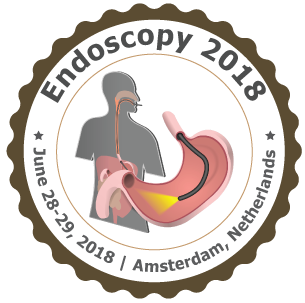12th International Conference on Abdominal Imaging and Endoscopy
Amsterdam, Netherlands

Yusuf Gunay
Bulent Ecevit University, Turkey
Title: Correlation of Computed Tomography with Endoscopy in the Evaluation of Patients with Asymptomatic Iron Deficiency Anemia
Biography
Biography: Yusuf Gunay
Abstract
Chronic gastrointestinal blood loss is the leading cause of iron deficiency anemia in adult patients. Although abdominal computed tomographic (ACT) scanning is more accurate than endoscopy in the evaluation of mural and extraintestinal abnormalities of the gastrointestinal system (GIS), its usefulness in the evaluation of iron deficiency anemia is debated. The aim of our study was to investigate the concordance between endoscopy and ACT scan in the evaluation of asymptomatic adult patients with iron deficiency anemia.
Material and Methods
Laboratory studies included complete blood count, and total iron-binding capacity. Patients underwent endoscopy (colonoscopy, esophagogastroduodenoscopy), and ACT.
Result
Eighty four patients (38 men and 46 women) with the mean of age 60.7 (range: 19-83) years met the inclusion criteria of asymptomatic iron deficiency anemia. The mean hemoglobin level was 9.8±1.7g/dL. The concordance between ACT and endoscopy was found in 33 (39.3%) patients. The most common lesions identifed in CT and then confirmed with endoscopy were GIS wall tickness or tumor, diverticule and hiatal hernia. ACT detected some superficial mucosal lesions as stomach or colon wall thickness which were confirmed with endoscopy such as chronic gastritis and duodenitis, large colonic polyps and small malignant tumor.
Conclusion
This study suggests that ATC may be useful in patients with iron deficiency anemia without gastrointestinal symptoms.ACT has a good concordance with endoscopy for the detection of gastrointestinal lesions, and has the advantage in locating lesions prior to endoscopy.

